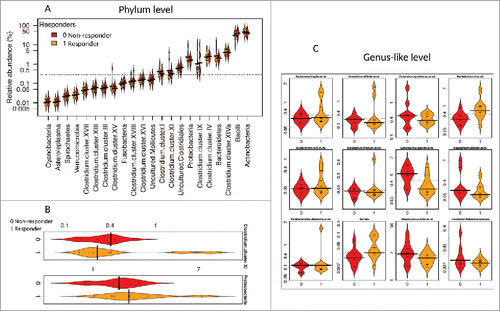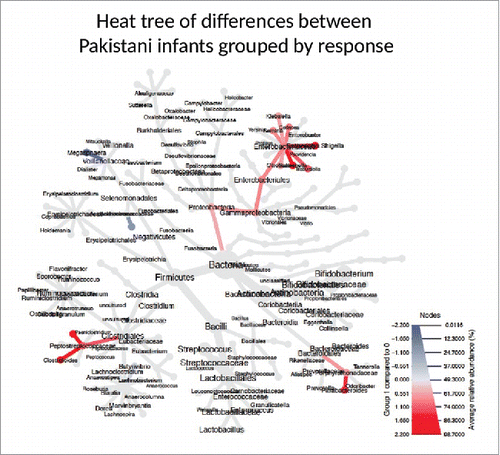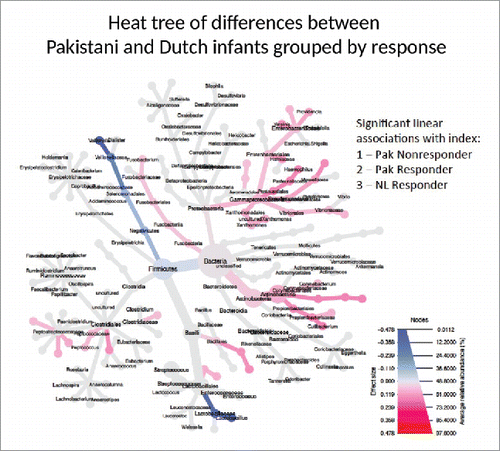Figures & data
Table 1. Baseline characteristics RV1 Non-responders and Responders.
Figure 1. Distribution of the relative abundance of bacteria between Pakistani responders and non-responders. The relative abundance (%) for all phyla (class for Firmicutes) (1A), significantly different phyla (p < 0.05) (1B), and significantly different bacteria at the genus-like level (FDR < 0.5) (1C) are illustrated. Bean plots compare Pakistani responders (1, orange) and non-responders (0, red). The horizontal black line is the median and the height of each bean plot illustrates the distribution of the values for abundance within each group.

Figure 2. Phylogenetic Heat Tree illustrates the differences in relative bacterial abundance between Pakistani non-responders and responder infants. Colored blue are bacteria where a lower abundance associates with RVV response and colored red are bacterial groups where a higher abundance correlates with RVV response.

Figure 3. Phylogenetic Heat Tree illustrates the differences in relative bacterial abundance between all Pakistani non-responder, Pakistani responder and Dutch infants when indexed by response. Each group's RVV response is indexed (Pakistani non-responder 1, responder 2, and Dutch infants 3) and those bacteria with significant linear associations with index are colored. Colored blue are bacteria where a lower abundance associates with RVV response and colored red are bacterial groups where a higher abundance correlates with RVV response.

